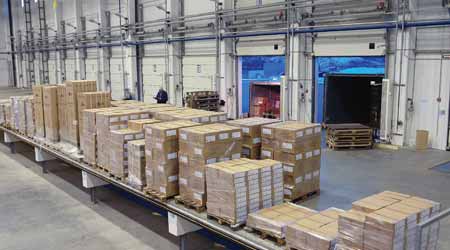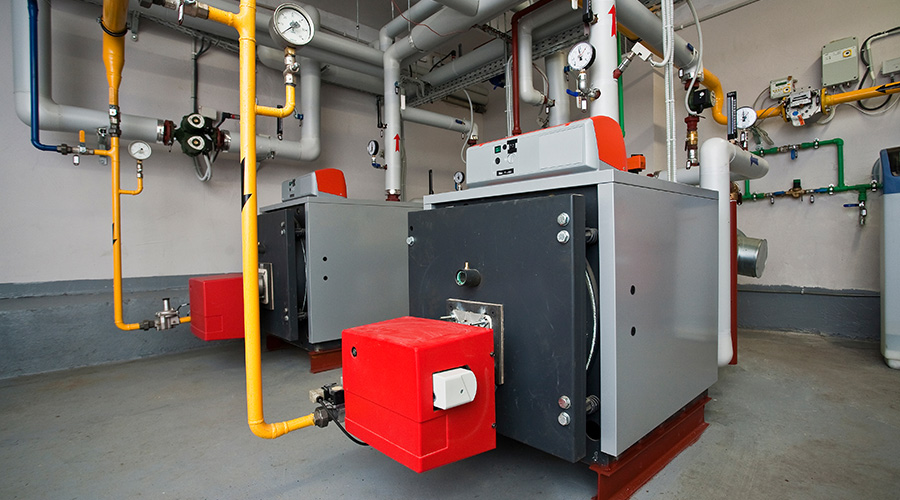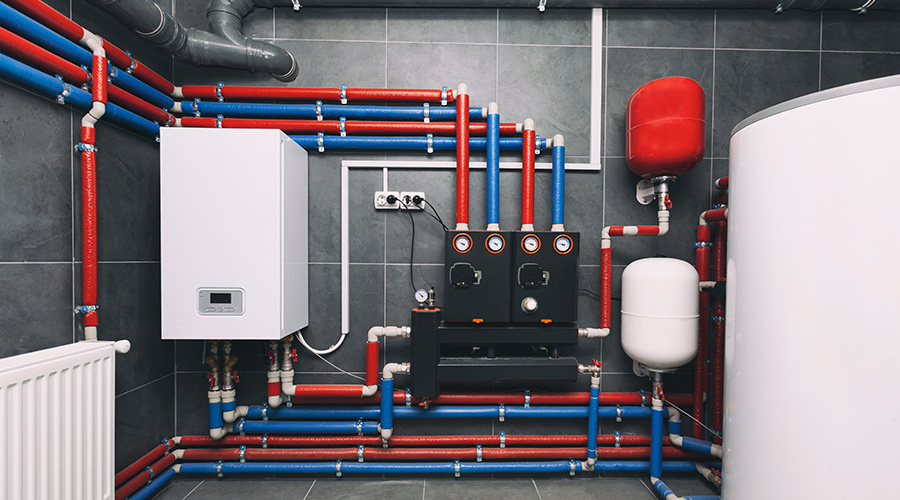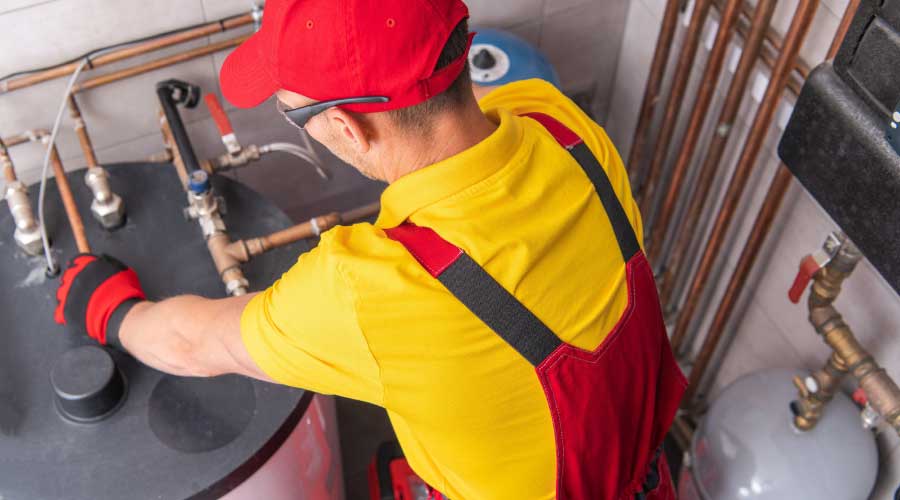 In warehouses that have large door openings, large quantities of conditioned air are lost to the outside every time the door is opened. Destratification fans can reduce the time required for the HVAC system to restore the space to the desired temperature.
In warehouses that have large door openings, large quantities of conditioned air are lost to the outside every time the door is opened. Destratification fans can reduce the time required for the HVAC system to restore the space to the desired temperature.How To Fight Air Stratification in Conditioned Facilities
The key to controlling stratification is to find a way to get the heated air at the upper levels of the space to drop down and mix with the cooler air at lower levels.
Among the more difficult buildings to properly heat and cool are those with high ceilings. During the heating season, the warm air rises towards the typically unoccupied areas near the ceiling, while colder air settles towards the floor where most building occupants are located. To maintain temperatures at the lower levels where most thermostats are located, the heating system must supply additional heat which rises towards the ceiling.
During the cooling season, the process is reversed with cool air settling to the floor. The higher one goes in the space, the warmer the temperature. If the space has a mezzanine level, maintaining temperatures at that level may require that ground level spaces be overcooled.
This process of the air being layered by temperature is known as thermal stratification. In a typical building, the temperature rise is approximately 0.5 degrees F per foot in height above the floor. The overheating and overcooling that is required to overcome stratification results in comfort issues and energy waste. Estimates of the annual energy savings that can be achieved if the effects of stratification can be reduced range between 15 and 20 percent.
The higher the ceiling of the conditioned space, the greater the potential for stratification. But ceiling height is not the only factor that impacts stratification. Heat generated within the space by occupants or equipment contributes to stratification as does solar gain. Stratification is more pronounced in buildings where the building envelope, particularly the envelope near the ceiling, is in poor condition, resulting in high heat losses due to conduction and exfiltration.
Fighting stratification
The key to controlling stratification is to find a way to get the heated air at the upper levels of the space to drop down and mix with the cooler air at lower levels. There are two major ways to do this: axial fans and high-volume, low-speed fans.
Axial fans are self-contained units that, when installed near the ceiling, can direct air towards the floor. They are small units that can be used in applications with ceiling heights up to 60 feet. They operate at a speed that, while high enough to move the air from higher levels to lower levels, is low enough to allow thorough mixing of the air from the ceiling with air located at the floor without causing irritating drafts. They are low in energy use and do not generate significant noise. A typical application requires roughly one fan per 1,000 square feet of floor space.
High-volume, low-speed fans in contrast are large units, typically eight to 14 feet in diameter. Also mounted near the ceiling, the units decrease stratification by churning the air rather than by forcing a stream of air downwards. They are best suited for use in open spaces with ceiling heights between 15 and 30 feet. Like axial fans, they are low in energy use and noise generation.
One consideration when installing high-volume, low-speed fans is that it may be necessary to relocate existing light fixtures. If lights are located directly above the fans, the rotating blades can produce an annoying strobe effect.
There are two basic types of control systems for both the axial and high-volume, low-speed fans: preventive and reactive. With preventive controls, the fans operate continuously to prevent the development of thermal stratification. Reactive controls measure the temperature at the ceiling and at the floor, turning the fan on when a preset temperature difference develops between the two. Both systems are effective in reducing stratification.
Related Topics:













